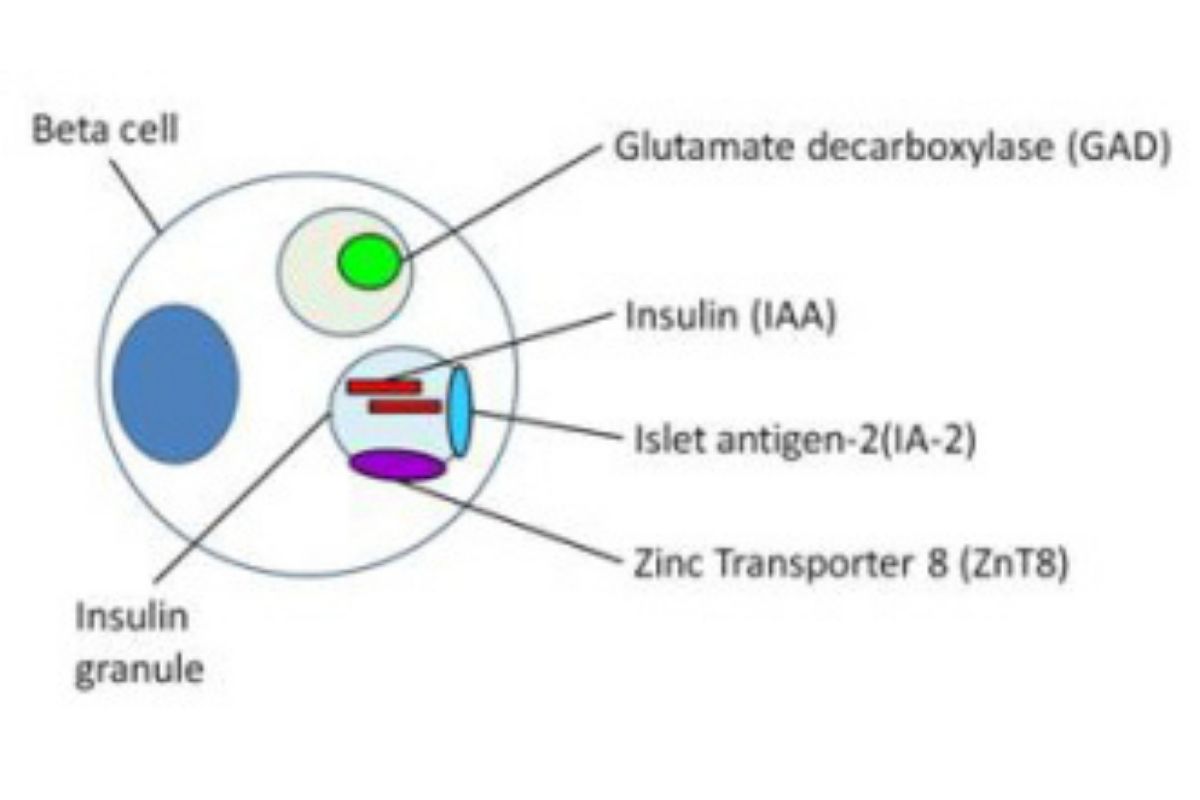Aha! An Autoimmune Disease!

When JDRF was founded, in 1970, there were no types of diabetes. There was no type 1, no type 2, no gestational (which, as we now know, happens when you are pregnant). It was all diabetes.
Until 1974. Two teams showed—for the first time—that insulin-dependent diabetes is associated with the development of antibodies directed against insulin-producing beta cells in the pancreas.1,2 This was instrumental in establishing type 1 diabetes (T1D) as an autoimmune disease.
Using this, investigators were able to:
1. Describe the presence of more antibodies, besides the islet cell antibodies, that were associated with T1D. There are now 5 antibodies connected with the disease.
What’s more, studies have shown that T1D begins well before its symptoms appear—and it includes the presence of 2 or more T1D-specific antibodies. This allowed us to conduct clinical trials before the presence of symptoms, to prevent or delay the progression to clinical onset of the disease.
2. Refine the tests for T1D-related antibodies, for more widespread study. This led to TrialNet—an international NIH-funded and JDRF-supported network of leading academic institutions, endocrinologists, physicians, scientists, and healthcare teams dedicated to finding cures for T1D—who began its Pathway to Prevention study in 2004. This study identifies people at risk for T1D with the aim to conduct clinical trials to stop the disease.
3. Conduct clinical trials targeting several immune pathways and mechanisms, including teplizumab—a drug that blocks CD3, a blood marker that helps activate immune cells. In a clinical trial conducted by TrialNet, it was the first study to significantly delay the onset of T1D, for nearly 3 years, in individuals at-risk of developing the disease.
Recently, JDRF also launched T1Detect, a community-based education and awareness program to expand screening to the general population. The program’s aim is to make people understand what type 1 is, how screening is advantageous to the public, how they can be involved, and what to do if you are positive for T1D-specific antibodies. Go to the T1Detect program to learn more.
If you or someone you know doesn’t have T1D and hasn’t been screened, encourage them to be screened, by either TrialNet (at no cost), if you have a relative with T1D, or through the JDRF T1Detect.
Based on the results of the antibody test, you will know your T1D risk status and if you may be eligible for a clinical trial through TrialNet.
- Bottazzo GF, Florin-Christensen A, Doniach D. Islet-cell antibodies in diabetes mellitus with autoimmune polyendocrine deficiencies. Lancet. 1974 Nov 30; 2 (7892): 1279-83. PMID: 4139522.
- MacCuish AC, Irvine WJ, Barnes EW, Duncan LJ. Antibodies to pancreatic islet cells in insulin-dependent diabetics with coexistent autoimmune disease. Lancet. 1974 Dec 28; 2 (7896): 1529-31. PMID: 4140978.